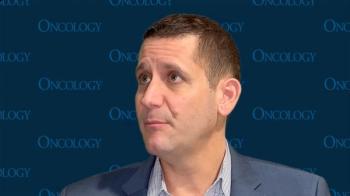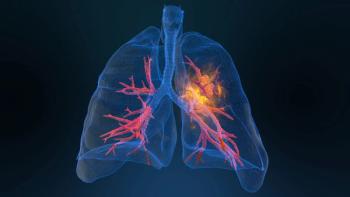
- Oncology Vol 30 No 4_Suppl_1
- Volume 30
- Issue 4_Suppl_1
(P005) Excellent Locoregional Control but Modest Overall Survival Achieved in Patients With Inflammatory Breast Cancer
With aggressive trimodality therapy, excellent locoregional control was achieved in patients with newly diagnosed inflammatory breast cancer. However, DFS and OS are suboptimal, despite modern trimodality treatment.
Sana Rehman, MD, Anupama Chundury, MD, Michael Roach, MD, Parth Shah, Daniel Mullen, Todd DeWees, PhD, Laura Eschen, Maria Thomas, MD, PhD, Imran Zoberi, MD; Washington University
PURPOSE/OBJECTIVE: Inflammatory breast cancer (IBC) is an aggressive subtype of breast cancer with trimodality treatment established as the standard of care. We report our institutional outcomes for IBC incorporating comprehensive radiation therapy (RT).
MATERIALS AND METHODS: A retrospective review was conducted of 40 patients with newly diagnosed IBC who completed RT from 2003 to 2015. Radiation fields targeted the chest wall and regional lymph nodes (supraclavicular, axillary, and internal mammary lymph nodes). Locoregional control (LRC), disease-free survival (DFS), and overall survival (OS) were estimated with Kaplan-Meier curves. Patients were evaluated for risk factors predicting for OS utilizing Cox regression analysis.
RESULTS: Median follow-up time was 44 months (range: 8–122 mo). Median age was 50 years (range: 29–85 yr). All but three (7.5%) patients received neoadjuvant chemotherapy. Two (5%) patients underwent a lumpectomy, and the remainder underwent a mastectomy; all patients underwent axillary lymph node dissection. Eight (20%) patients had positive or close surgical margins. Twelve (30%) patients had triple-negative receptor status; 15 (38%) were human epidermal growth factor receptor 2 (HER2/neu)-amplified and received trastuzumab. All patients completed adjuvant RT, with 18 (45%) receiving three-dimensional (3D) conformal RT and 22 (55%) receiving intensity-modulated RT. The median dose delivered to the chest wall and lymph nodes was 5,040 cGy. Thirty-six (90%) patients received a boost to the chest wall (median: 1,000 cGy, range: 600–2,160 cGy). Eleven (28%) patients were treated with hyperthermia concurrent with RT. Five-year LRC, DFS, and OS rates were 89%, 57%, and 68%, respectively. On multivariate analysis, an increasing number of pathologically positive lymph nodes was predictive for worse OS (hazard ratio [HR], 1.18 [95% CI, 1.07–1.29]; P < .001).
CONCLUSIONS: With aggressive trimodality therapy, excellent LRC was achieved in patients with newly diagnosed IBC. However, DFS and OS are suboptimal, despite modern trimodality treatment.
Proceedings of the 98th Annual Meeting of the American Radium Society -
Articles in this issue
Newsletter
Stay up to date on recent advances in the multidisciplinary approach to cancer.
















































































